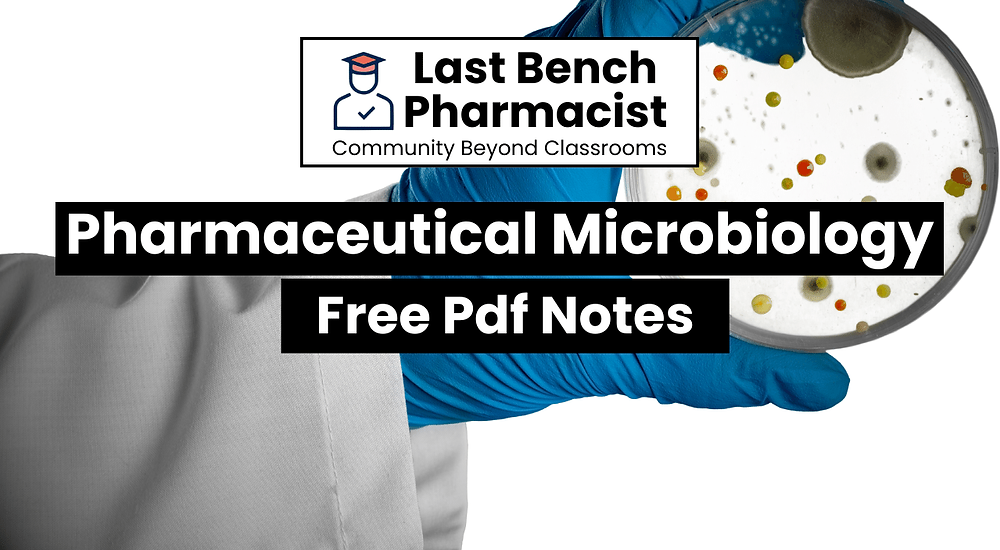



#bpharmnotes #bpharmmicrobiologynotes #bpharmpdfnotes
In the unseen corners of the pharmaceutical world, tiny yet mighty players hold the key to life-saving drugs. These are the microorganisms, explored in fascinating detail in B.Pharm Pharmaceutical Microbiology. Forget the fear factor; these B Pharm Pharmaceutical Microbiology Pdf Notes unlock the secrets of beneficial microbes and equip you to harness their power for innovative medicine.
Scope:
Study of all categories of microorganisms especially for the production of alcohol antibiotics, vaccines, vitamins enzymes etc..
Objectives: Upon completion of the subject student shall be able to;
Understand methods of identification, cultivation and preservation of various microorganisms
To understand the importance and implementation of sterilization in pharmaceutical processing and industry
Learn sterility testing of pharmaceutical products.
Carried out microbiological standardization of Pharmaceuticals.
Understand the cell culture technology and its applications in pharmaceutical industries.
Introduction, history of microbiology, its branches, scope and its importance
Introduction to Prokaryotes and Eukaryotes
Study of ultra-structure and morphological classification of bacteria, nutritional requirements, raw materials used for culture media and physical parameters for growth, growth curve, isolation and preservation methods for pure cultures, cultivation of anaerobes, quantitative measurement of bacterial growth (total & viable count).
Study of different types of phase contrast microscopy, dark field microscopy and electron microscopy
Identification of bacteria using staining techniques (simple, Gram’s &Acid fast staining) and biochemical tests (IMViC).
Study of principle, procedure, merits, demerits and applications of physical, chemical gaseous, radiation and mechanical method of sterilization. Evaluation of the efficiency of sterilization methods. Equipments employed in large scale sterilization. Sterility indicators.
Study of morphology, classification, reproduction/replication and cultivation of Fungi and Viruses.
Classification and mode of action of disinfectants Factors influencing disinfection, antiseptics and their evaluation. For bacteriostatic and bactericidal actions
Evaluation of bactericidal & Bacteriostatic.
Designing of aseptic area, laminar flow equipments; study of different sources of contamination in an aseptic area and methods of prevention, clean area classification
Principles and methods of different microbiological assay. Methods for standardization of antibiotics, vitamins and amino acids. Assessment of a new antibiotic.
Types of spoilage, factors affecting the microbial spoilage of pharmaceutical products, sources and types of microbial contaminants, assessment of microbial contamination and spoilage. Preservation of pharmaceutical products using antimicrobial agents, evaluation of microbial stability of formulations.
Growth of animal cells in culture, general procedure for cell culture, Primary, established and transformed cell cultures. Application of cell cultures in pharmaceutical industry and research.